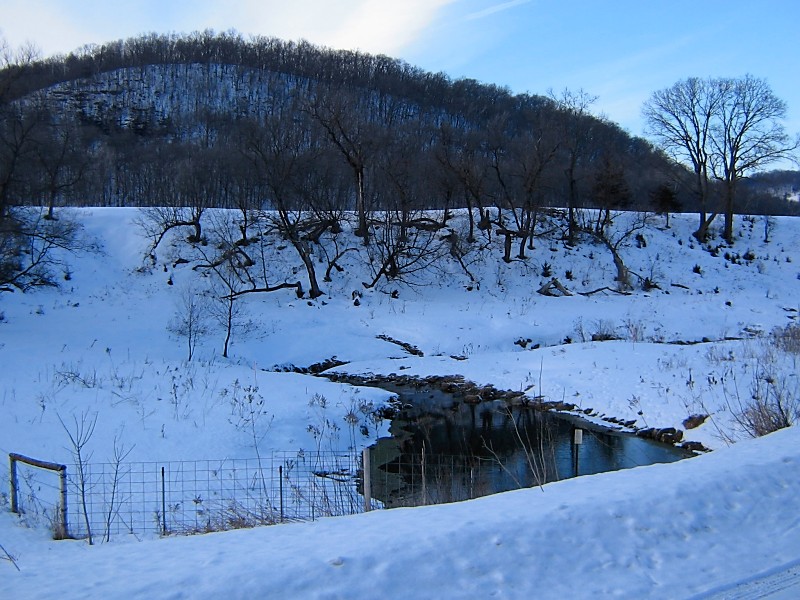By Jane Mazack
Exploring Daley Creek is a blog series that investigates the biological and physical processes at work in a small stream in Minnesota and what it means to consider rivers in a scientific framework. Follow along to learn more about life in the stream and its broader connections, both in the present and as we consider a future of climate change.
When you drive along the Mississippi River in southeastern Minnesota, one of the first things you notice is the topography. Each side of the river is flanked with plateaus and carved with valleys. Daley Creek is nestled within one of these valleys. It twists and turns through farms and fields, flowing into the Root River where it joins in a 25 mile journey to the Mississippi River itself. But this journey doesn’t just go back 25 miles – it goes back tens of thousands of years to its (lack of) glacial history.
Daley Creek, Houston County, Minnesota. Photo by the author, all rights reserved.
As you travel up the valley, you travel back in history. The most recent Ice Age glaciated much of the Midwestern United States. When the final glaciers melted and receded, they left behind a glacial drift of silt, sand, gravel, and boulders – a new, untouched landscape.
But in the midst of this new landscape remains an old landscape. Daley Creek and the surrounding area weren’t glaciated and weren’t covered with glacial drift. This “Driftless Area” encompasses southeastern Minnesota, along with southwestern Wisconsin and portions of Iowa and Illinois.
This ancient landscape is characterized by deeply-eroded channels. Years and years of stream flow have carved a path through the surface of the land, creating deep valleys among hills and plateaus. The present form of Daley Creek is just a moment of its long history as it continues its future journey. This history is what makes Daley Creek unique; join us next week to learn how the landscape dramatically impacts the stream in the winter.
The writing and analysis of this blog series were conducted under the auspices of the John E. Sawyer Seminar “Making the Mississippi: Formulating New Water Narratives for the 21st Century”. Sawyer seminars are funded by the Andrew Mellon Foundation; further information about “Making the Mississippi” can be found here.
